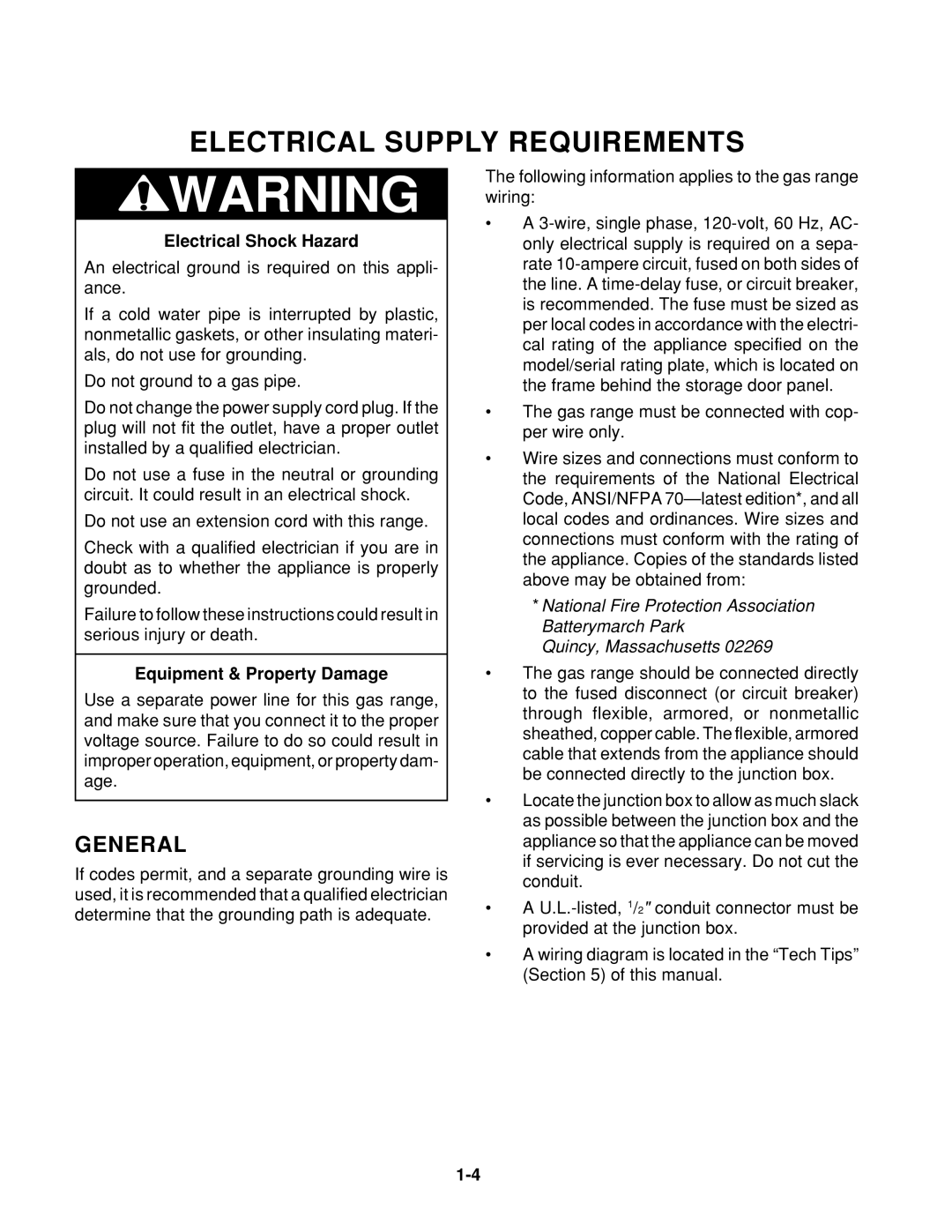
ELECTRICAL SUPPLY REQUIREMENTS
![]() WARNING
WARNING
Electrical Shock Hazard
An electrical ground is required on this appli- ance.
If a cold water pipe is interrupted by plastic, nonmetallic gaskets, or other insulating materi- als, do not use for grounding.
Do not ground to a gas pipe.
Do not change the power supply cord plug. If the plug will not fit the outlet, have a proper outlet installed by a qualified electrician.
Do not use a fuse in the neutral or grounding circuit. It could result in an electrical shock.
Do not use an extension cord with this range.
Check with a qualified electrician if you are in doubt as to whether the appliance is properly grounded.
Failure to follow these instructions could result in serious injury or death.
Equipment & Property Damage
Use a separate power line for this gas range, and make sure that you connect it to the proper voltage source. Failure to do so could result in improper operation, equipment, or property dam- age.
GENERAL
If codes permit, and a separate grounding wire is used, it is recommended that a qualified electrician determine that the grounding path is adequate.
The following information applies to the gas range wiring:
•A
•The gas range must be connected with cop- per wire only.
•Wire sizes and connections must conform to the requirements of the National Electrical Code, ANSI/NFPA
*National Fire Protection Association Batterymarch Park
Quincy, Massachusetts 02269
•The gas range should be connected directly to the fused disconnect (or circuit breaker) through flexible, armored, or nonmetallic sheathed, copper cable. The flexible, armored cable that extends from the appliance should be connected directly to the junction box.
•Locate the junction box to allow as much slack as possible between the junction box and the appliance so that the appliance can be moved if servicing is ever necessary. Do not cut the conduit.
•A
•A wiring diagram is located in the “Tech Tips” (Section 5) of this manual.
